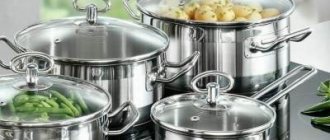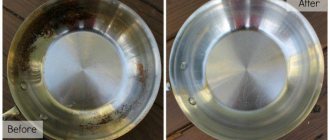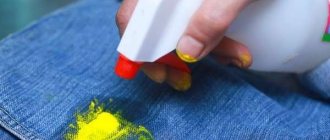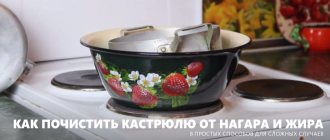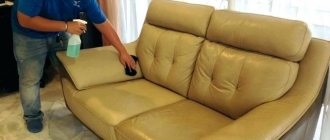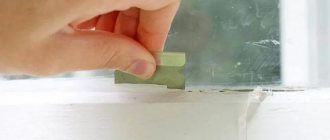“Stainless Steel Processing” is an article about the basic technology of stainless steel processing. Grinding and polishing of stainless steel welds to a mirror shine, profile and round pipes, how and with what paste, with video
Subscribe to the newsletter so you don't miss new articles and drawings:
This article is from a series of articles devoted to the production of railings and fencing as a business. In the future, I will write articles with videos on making exclusive stainless steel railings. In the next video I will make a fence from a profile pipe.
If you are interested in opening the production of fences and railings. I advise you to read the article “What kind of production to open”. The article describes marketing principles that help promote such a business.
Below are two videos showing the processing of stainless steel. Polishing and grinding of welded seams of round and profile pipes, in the first video how to bring it to a mirror shine. In the second, giving a matte surface.
In this way you can polish and grind not only stainless steel, but also any metal. The only difference is in the hardness of the metal; you will spend more time and consumables on iron than on stainless steel, and you may not even notice the difference, only on large volumes. Brass and copper can be polished without grinding, but it is still better to use sandpaper, and cast iron generally does not lend itself well to polishing. Also, other metals are susceptible to exposure to the external environment, iron rusts, brass and copper darken. So other metals need to be chromed or varnished.
Application area
Electrochemical polishing technology is actively used in industry: for processing fittings, carburetor elements (fuel supply valves made of stainless steel), thin strips, wires and pipe mechanisms.
As a result of polishing, the surface of these parts becomes resistant to corrosion and becomes smoother. Currently, this technology is actively used to remove the defective layer from cutting tools used to make holes. Electrochemical polishing of tungsten began to be actively introduced in the production of electron tubes and electric vacuum equipment.
The use of electrochemical polishing technology is practiced in metallographic studies for the diagnosis of steels. Using this technology, cracks, flakes and other inconsistencies in the structure of metals are detected. If irregularities are detected, polishing is carried out to remove the most subtle deformations.
How to polish stainless steel?
Good afternoon The essence of the problem: a JetAir stainless steel hood, almost new, while removing fingerprints, was accidentally wiped with the hard side of a dishwashing sponge and something like abrasion formed on the steel, consisting of small, small scratches. Not very noticeable, but still visible. Maybe you can polish it with something, or will you have to polish the entire surface?
You can polish stainless steel in the same way as other materials: take a polishing paste (such as GOI), or better yet, pure chromium oxide (make a suspension of chromium oxide in water, or better yet in kerosene, but kerosene stinks strongly), apply it to soft felt and polish . However, if the scratches were deep, then the results of local polishing will most likely be noticeable. They will be even more noticeable when using mechanical polishing machines.
Thanks for the answer. The scratches are very small, and the term abrasion is more appropriate for them. If possible, please tell me whether chromium oxide is sold in stores/pharmacies or should I look for it in enterprises?
2Sergey Z. Take GOI, it’s definitely on sale, you can try tooth powder, but it’s now harder to find than GOI
Thank you. One more question: should the entire surface of the hood be polished or locally?
Come to Syktyvkar
2Sergey Z. IMHO – does your hood have a polished surface? Most often, stainless steel of hoods and refrigerators has a peculiar texture. It is not polished, but covered with small parallel scratches in one direction. This surface is less easily soiled and fingerprints are not visible on it, as on a polished surface. Polished - it's like a mirror. If you really have a polished surface, polishing with GOI paste will help. It can be diluted not necessarily in kerosene, but in vegetable oil. But if the surface consists of small patterns, then polishing will only do harm
2Sergey Z. First locally, if the result differs from the rest of the surface, then the entire
The surface really seems to be covered with small lines - is it impossible to polish? Apparently you'll have to leave it like that, you'll see it becomes familiar and won't be conspicuous. But I’ll try to polish it in an inconspicuous place. Thanks to all.
2Sergey Z. It’s definitely not possible to polish. The result will be a lighter, shiny spot. I have a similar problem on my refrigerator - it was scratched by magnetic figurines. It seems to me that these scratches can only be repaired by “scratching” the surface in the same direction as the base scratches. I did not try to remove the scratches, but I assumed that I could try using a belt sander with fine-grained sandpaper, selected experimentally. I understand that this is delicate and complex work, but the principle should be exactly like this - chaotic small scratches strictly in one direction. As an alternative, wipe away traces of “extra” scratches with a sponge with an abrasive layer (the kind for frying pans), rubbing the surface with it strictly in the direction of the main scratches.
Wow, what a mess.
There is such a paste in car dealerships called “Anti-scratch” that removes scratches remarkably well.
How to properly care
In order not to look for how to clean stainless steel from dark stains, it is important to remember the rules of care. After each cooking, carefully remove any remaining food and fat from the dishes. During heat treatment, food should not burn to the bottom. Leaked traces are removed from both the utensils and the cooking surface of the stove.
The joints of the handles are the vulnerable part of the cookware. When washing with aggressive chemicals labeled “anti-grease,” you should not apply them to these areas. Contact with an unfavorable environment may cause corrosion stains.
Features of care Source takprosto.cc
What is pipe polishing
The final stage in the manufacture of rolled pipes, which consists of melting the surface layer and processing it in various ways in order to eliminate roughness, unevenness and microdamage, is called pipe polishing. Features, types of polishing operations
Regardless of the method of producing rolled products, metallurgical enterprises use two methods of polishing pipe products:
- electrochemical;
- abrasive.
Both the external and internal sides of the product are subject to processing.
When using an electrochemical polishing process, pipes are lowered into a special bath with a concentrated acid-containing mixture. Then an electrode is placed in the solution and fixed either in the hole of the tubular product or on its outside, after which a high current is applied. Due to the active movement of anodic-cathode particles, the metal surface is cleaned of irregularities formed during production cycles.
Polishing a pipe using an abrasive method is cheaper and does not require special skills from craftsmen. Rolled pipes are processed with abrasives of various fractions, which helps to obtain a mirror-like shine of the finished product. At the final production stage, felt rollers, elastic tape-like devices and suspensions of metal oxides are used in turn.
There is a known method of liquid abrasive polishing of pipe products. In this case, a liquid is used as a basis, which wets the surface of the pipe and the grinding parts. The parameters of the finished product processed in this way do not differ from the parameters when using abrasives during dry polishing.
Advantages of polished rolled metal:
- high resistance to corrosion;
- pleasant appearance;
- durability;
- easy maintenance;
- does not change functions during operation;
- distinctive resistance to aggressive environments and temperature changes.
Application of polished tubular products
Ground rolled pipe has gained wide popularity due to its chemical stability under changing conditions: the processed metal does not tend to emit oxides, odors, or harmful fumes. Therefore, polished pipe profiles are used in the medical, food, and chemical production fields.
Design activities, production of furniture for commercial and domestic premises, production of sanitary equipment cannot do without rolled pipes with a mirror shine. Heated towel rails, bathroom equipment, fountain structures, office chairs, bar counters, railings, stairs - a list of the most commonly used products using polished pipes.
Polished pipe parts are used in shipbuilding and mechanical engineering. The resistance of the polished material to corrosion allows the pipes to be used in environments with high humidity and acidity.
The attractive appearance of rolled pipes, which is preserved during the operation of the product with constant temperature changes, makes it possible to produce decorative devices for the street from polished parts: design of personal plots, urban home areas.
Methods for polishing stainless steel
Stainless steel polishing can be done at home. In this case, several processing methods are used. Common methods include:
- mechanical;
- electrochemical;
- electrolyte-plasma.
Mechanical restoration
Polishing of stainless steel is carried out using a material represented by grains of abrasive material. When processing, a circle, disk, roller or tape is used. Various pastes, solutions and suspensions for polishing act as abrasives. The material may contain substances that, in combination with abrasive grains, remove irregularities on metal surfaces. This type of processing is called mechanical.
As a result of mechanical impacts on the metal surface, grooves and stripes with roughness up to class 7 are formed. In this case, additional refinement of stainless steel to class 10 by grinding is necessary.
Refinement of stainless steel can be done at home without the use of special devices and tools. This type of polishing is common in private workshops and garages. In industrial enterprises, the following types of tools are used:
- manual devices with electric and pneumatic drive;
- polishing and grinding machines;
- drum and vibration units;
- installations for processing using magnetic abrasive.
The following abrasive materials are used for fine grinding:
- liquid polish;
- pasta;
- suspension.
They contain mineral oils, paraffin and stearin additives as a base; they must be removed after processing with solvents.
Electrochemical method
Chemical polishing is the process of removing roughness using the ordered movement of charged particles from one electrode to another. The method uses installations with baths filled with an electrolyte solution. One of the electrodes is connected to the negative pole of the power source. The immersed stainless metal workpiece is connected to the positive terminal of the power source.
When direct current is applied, charged ions begin to form on the metal surface, which then flow to the cathode. When stainless steel particles are released, the microprotrusions are smoothed out. During processing, the operator can set the depth of metal removal by adjusting the constant current value, as well as the process time.
The method allows you to polish parts with complex geometric surfaces. Uneven areas are removed from difficult to access areas. The electrolyte has a temperature of up to 90°C, a current density of 0.5 A/cm2, and contains inorganic acids: phosphoric acid and sulfuric acid.
Electrolyte-plasma polishing
The method is based on the formation of a jacket on top of the part, which is a vapor-gas plasma. This allows you to remove irregularities from the metal surface. Apparatuses for polishing stainless steel at home operate on an alternating current network at a voltage of 400 V and an electrolyte solution temperature of 90°C. The rate of metal layer removal is up to 3 microns per minute.
The advantages of this method include:
- use of safe substances;
- minimum costs.
This is interesting: How and with what to glue metal to glass - methods, glue
Plasma polishing
The technology differs from the electrochemical procedure in the following parameters:
- the solution is not aggressive, disposal does not require special cleaning;
- voltage is higher (220 V);
- temperature is about 100 °C.
The reagent used is ammonium salt with a concentration in the solution of 3.1 ÷ 6.0%. The electric current density is set at 0.35 ± 0.15 A/cm²; gas bubbles are intensively formed in the contact zone of the electrolyte with the stainless steel. Discharges occur in the vapor inside the fluidized bed, ionizing the medium. Plasma tongues appear that specifically act on the steel, polishing it. The time required for one dive is within 6 minutes, based on a power consumption of 5 Wh/cm².
For a stable process of polishing a surface of a certain area using the electroplasma method, the appropriate power of the installation is required. You cannot reduce its value in the hope of increasing the duration of treatment in the bath. The conditions for the formation of a plasma-ionized layer will not be met.
Unscrupulous mechanical preparation will be evident. Residual traces of welds, scratches, and dents cannot be hidden with polish.
Stainless steel in everyday life
No kitchen is complete without stainless steel appliances and interior parts. This is not surprising, since this particular alloy is quite strong and durable, especially since it does not require special care. Stainless steel is often used to make dishes, cutlery and stoves, as this metal has a fairly high thermal conductivity.
But there are also some disadvantages to stainless steel: with regular use, it noticeably tarnishes. The kitchen is losing its shine. To prevent this from happening, it is necessary to periodically polish the stainless steel. There are many different ways to solve this problem. An important point in this procedure is the correct selection of polishing agent for stainless steel.
When cleaning steel products, never use bleach or abrasives. Also, do not use metal sponges or brushes with stiff bristles.
There are several alternative polishing methods.
Polishing with flour
You can also use flour to polish metal products. It is good for cleaning flat surfaces, such as a sink or pan.
- The product is sprinkled with flour so that there are no gaps left at all.
- The flour should be distributed evenly.
- Using a dry cloth, polish the surface in a circular motion.
- Next, the flour is very easy to remove from the surface.
Methods for polishing stainless steel
Stainless steel polishing can be done at home. In this case, several processing methods are used. Common methods include:
- mechanical;
- electrochemical;
- electrolyte-plasma.
Mechanical restoration
Polishing of stainless steel is carried out using a material represented by grains of abrasive material. When processing, a circle, disk, roller or tape is used. Various pastes, solutions and suspensions for polishing act as abrasives. The material may contain substances that, in combination with abrasive grains, remove irregularities on metal surfaces. This type of processing is called mechanical.
As a result of mechanical impacts on the metal surface, grooves and stripes with roughness up to class 7 are formed. In this case, additional refinement of stainless steel to class 10 by grinding is necessary.
Refinement of stainless steel can be done at home without the use of special devices and tools. This type of polishing is common in private workshops and garages. In industrial enterprises, the following types of tools are used:
- manual devices with electric and pneumatic drive;
- polishing and grinding machines;
- drum and vibration units;
- installations for processing using magnetic abrasive.
The following abrasive materials are used for fine grinding:
- liquid polish;
- pasta;
- suspension.
They contain mineral oils, paraffin and stearin additives as a base; they must be removed after processing with solvents.
Electrochemical method
Chemical polishing is the process of removing roughness using the ordered movement of charged particles from one electrode to another. The method uses installations with baths filled with an electrolyte solution. One of the electrodes is connected to the negative pole of the power source. The immersed stainless metal workpiece is connected to the positive terminal of the power source.
When direct current is applied, charged ions begin to form on the metal surface, which then flow to the cathode. When stainless steel particles are released, the microprotrusions are smoothed out. During processing, the operator can set the depth of metal removal by adjusting the constant current value, as well as the process time.
The method allows you to polish parts with complex geometric surfaces. Uneven areas are removed from difficult to access areas. The electrolyte has a temperature of up to 90°C, a current density of 0.5 A/cm2, and contains inorganic acids: phosphoric acid and sulfuric acid.
Electrolyte-plasma polishing
The method is based on the formation of a jacket on top of the part, which is a vapor-gas plasma. This allows you to remove irregularities from the metal surface. Apparatuses for polishing stainless steel at home operate on an alternating current network at a voltage of 400 V and an electrolyte solution temperature of 90°C. The rate of metal layer removal is up to 3 microns per minute.
The advantages of this method include:
- use of safe substances;
- minimum costs.
This is interesting: How and with what to glue metal to glass - methods, glue
Advantages and disadvantages
Electrochemical polishing has the following advantages:
- It increases the strength of steel and prevents rust from appearing on the metal surface. This type of polishing facilitates the drawing and stamping procedure.
- It is capable of softening the surface of complex and refined parts that have additional holes or cavities with complex patterns.
- Electrochemical polishing allows you to reduce the polishing time of the workpiece surface.
- Due to the high productivity of this type of polishing, the basic structure of the product is not damaged during metal processing.
- Speeds up the polishing process.
Despite the large number of advantages, electrochemical polishing has several disadvantages:
- The complexity of polishing due to the need to prepare an individual solution for processing parts made of different steels and regulating the amount of current supplied.
- It uses electropolishing elements, which leads to increased energy consumption.
- Electrochemical polishing cannot smooth out the surface of a workpiece with large cracks or depressions.
- As with chemical polishing, a person needs to work with toxic substances that harm the body.
- Electrochemical polishing does not require large financial expenses, unlike mechanical polishing, which is due to the purchase of many chemical solutions and a permanent supply of electricity. The electrolyte has a short service life, so it must be periodically renewed, which leads to additional financial costs.
To effectively use electrochemical polishing technology, you need to follow safety precautions: work in special clothing, properly configure technical equipment, and perform polishing only with working devices.
Cleaning the hood
This is not an easy task. But quite doable. To prevent dirt and soap from staining the stove, it is better to cover it with newspapers or old towels.
To clean the hood, you can use a specialized product or prepare a solution yourself. You will need bicarbonate of soda, lemon juice and water. The product must be rubbed in carefully so as not to damage the surface. It is enough for the solution to remain on the hood for several minutes, after which it must be washed off with clean running water. Next, you need to polish the surface well with a dry cloth. After this procedure, the hood will shine like new.
How to polish steel at home
Stainless steel comes in different varieties. After all, it contains several different metals. The basis of stainless steel is iron, titanium, nickel, molybdenum, manganese, and this is not the entire list. Chromium, which is also present in its composition, helps this steel resist corrosion.
What prevents steel from rusting
When chromium interacts with oxygen, a protective film is formed on the surface of stainless steel; it is this film that protects the alloy from exposure to aggressive environments.
The amount of chromium will determine the degree of corrosion resistance of steel.
For example, in the manufacture of refrigerators, an alloy with an average chromium content (10-17%) is used. But if the device is constantly in contact with water or is subjected to temperature loads, then an alloy with a high chromium content, up to 26%, is used. Such appliances include washing machines, dishwashers, sinks, hoods, cookers and kettles.
Where can I polish?
In order for the surface of the alloy to be beautiful and smooth, you need to polish the stainless steel. Nowadays, there are many companies whose specialization is this particular procedure; they put in order various products made from this alloy. But it turns out that you can polish stainless steel at home.
Of course, if you need better quality work, it is better to seek help from specialists. For example, a polished square stainless steel pipe will look much more impressive after factory processing than after home processing.
Any company that specializes in polishing will easily perform this procedure.
How to process steel
How to polish stainless steel to a mirror shine? Here is a list of everything you will need:
- polishing paste;
- felt or felt circles;
- wood glue;
- grinding wheels with different grain sizes;
- sandpaper or stone;
- Bulgarian.
Main stages of the process
The process takes place in several stages. First you need to do some rough cleaning. Next comes a wheel with a fiber base and an angle grinder. But this procedure can be skipped provided that the surface of the product is already quite smooth.
Grinding wheels come next. The surface must be processed several times, and each time the size of the abrasive should decrease.
If such circles are not available, then you can easily make them yourself. To do this, you can use a felt circle or felt. You need to apply wood glue to it with a spatula, and then rub it over the abrasive chips.
This operation will make the steel surface perfectly smooth. Under no circumstances should any roughness remain. After all, after polishing it will be much more difficult to seal them.
The next step is to apply polishing paste and a felt wheel. Here it is better to consult a specialist, since a specific brand of alloy requires a specific paste.
Of course, it is best to use diamond, the grit of which is suitable for the metal intended for processing. Final polishing is carried out until there are no visible flaws left.
A polished stainless steel pipe should look just perfect.
Stainless steel in everyday life
No kitchen is complete without stainless steel appliances and interior parts. This is not surprising, since this particular alloy is quite strong and durable, especially since it does not require special care. Stainless steel is often used to make dishes, cutlery and stoves, as this metal has a fairly high thermal conductivity.
But there are also some disadvantages to stainless steel: with regular use, it noticeably tarnishes. The kitchen is losing its shine. To prevent this from happening, it is necessary to periodically polish the stainless steel. There are many different ways to solve this problem. An important point in this procedure is the correct selection of polishing agent for stainless steel.
When cleaning steel products, never use bleach or abrasives. Also, do not use metal sponges or brushes with stiff bristles.
There are several alternative polishing methods.
Olive oil
This method is just for those who are thinking about how to polish stainless steel at home. Tarnished dishes will begin to shine again, like new. All you need is oil and rags, preferably made of soft fabric.
Olive oil
This method is just for those who are thinking about how to polish stainless steel at home. Tarnished dishes will begin to shine again, like new. All you need is oil and rags, preferably made of soft fabric.
- First of all, you need to moisten a rag with oil.
- Using this cloth, it is necessary to apply oil to the product so that it is completely covered with an oil film.
- Next, you can begin polishing by pressing the oiled rag firmly against the metal.
- To prevent the steel from becoming dull again, excess oil is removed using dry towels or napkins. They need to rub the surface until the product is completely dry.
Choosing an angle grinder or grinder for grinding and polishing stainless steel
I have extensive experience using grinders for grinding (more than 12 years) and the best of them is Metabo. In terms of price/quality ratio it is natural.
Article
article about grinders
An article where I write in detail about grinders HERE
Characteristics of the required grinder
- Power from 1400 W
- Speed adjustment 2500-11000 rpm
- The size of the grinder for 125 mm discs is small, otherwise your hands will get tired quickly
The grinder is better than the metabo, which is FEIN, but the cost with the same characteristics is three times more.
Grinder Metabo WEV 15-125 Quick
Today we use this model of Metabo angle grinders in our production. In the video I’m using an angle grinder from this company.
The average cost of such an angle grinder is around 8,500 rubles. If you take it for home, then for life, if for production, then you won’t find a more economical option.
Consumables
Sutures are removed using a KLT circle with a diameter of 125 mm. Grit size P-80 - P-120. The video uses the Luga-Abrasive Circle. The best 3M, but expensive.
After CRT, it is necessary to smooth out unevenness and rough risks after CLT. They are removed with a Velcro sanding wheel, Grain R-80. Risks after the P-80 circle are removed with the same circle using P-320 grain.
I advise you to use circles from Mirka; using cheap ones will be more expensive.
Polishing. When grinding of welds with P-320 grain is completed, polishing of the pipe begins to a mirror shine, using felt + paste. You can goy, but it is harmful.
Wipe with a cloth
Grinding and satining (matting) the seam on a profile pipe
Consumables
The process of processing such as satin-finishing is not much different from processing under a mirror.
The sequence of using consumables begins in the same way as in the previous example. Only instead of felt we use a satin finish.
Sanding roller . After the Velcro sanding wheel with P-320 grit, a sanding roller is used. It is attached to a low-speed angle grinder using an adapter.
After the sanding roller, the surface is finished with Scotch Brite. We use
You can also refine the sanded surface with a sanding sponge. And a matte surface can be achieved with the same sponge after polishing the metal.
Polishing stainless steel to a mirror shine with your own hands
In the modern world, we regularly come across stainless steel objects, because they have become a part of our lives. These are interior elements on the street and at home, various fences, and a variety of utensils in the kitchen. In this article you will find the answer to the question: how to polish stainless steel, because even such a durable metal can lose its original appearance under the influence of various factors.
What is household stainless steel?
Corrosion-resistant steel or, as it is also called, stainless steel is an alloy of iron and carbon with an admixture of special elements. Steel acquires high resistance to negative environmental factors thanks to these elements. The main one is chromium.
Its percentage in the metal may vary, but not less than 10.5%. Products made from steel with 18% chromium content acquire very high strength, but it is difficult to process such an alloy technologically.
Therefore, in everyday life, steel with an optimal chromium content of 13% is mainly used.
Important! Products made from such stainless steel are characterized not only by durability and the possibility of long-term use, but also by an attractive appearance with a mirror surface. Due to the sufficient chromium content, an oxide film is formed on the metal surface, which protects the stainless steel from corrosion. But still, humid air and other factors can negatively affect the condition of the alloy over time.
But still, humid air and other factors can negatively affect the condition of the alloy over time.
Due to the sufficient chromium content, an oxide film is formed on the metal surface, which protects the stainless steel from corrosion. But still, humid air and other factors can negatively affect the condition of the alloy over time.
Important! Having noticed the first signs of corrosion in the form of cloudiness or tarnishing, it is necessary to polish the metal. If there is a need to polish metal, then there are two possible actions. If there is a need to polish the metal, then there are two possible actions:
If there is a need to polish metal, then there are two possible actions.
Option #1. Specialized assistance
Nowadays, many specialized companies provide high-quality polishing services for stainless steel products. If you do not have the time and opportunity to polish the metal yourself, then contact one of these companies that will give your product a second life.
Option #2. Polishing at home
At home, you can also get a polished, shiny and perfectly smooth stainless steel surface. To do this, there are several ways that will help restore the product to its impeccable appearance. Let's look at what you can use to polish stainless steel.
Electrochemical polishing – equipment and technologies
To order electropolishing services, you can fill out the form below or refer to our article in the “Services” section: Electropolishing service.
The process complements finishing machining
The use of electropolishing of steels has been practiced commercially since the 1930s, mainly concerned with imparting visual appeal to consumer goods such as dishes and pens, fittings, etc. In recent years, the emphasis has shifted to the processing of engineering equipment, especially in the food, medical, pharmaceutical and semiconductor industries. Electrochemical dissolution of the metal surface is used to improve the smoothness, reflectivity, cleanliness and passivity of steel products
or some combination of these surface characteristics. When applied to piping system components, electrolytic polishing helps achieve and maintain desired surface roughness indexes.
While conventional machining processes are macro metal removal processes, electropolishing is a micro process. Thus, it is not a competitor to processes such as grinding, blasting, sandblasting and mechanical polishing, but rather a complement.
Almost all metals and alloys can be electropolished, but in practice stainless steel accounts for the largest portion of commercial electropolishing. Stainless steel's inherent strength and corrosion resistance make it the material of choice for process equipment and many consumer products.
Methods for polishing stainless steel
There are several technologies for polishing stainless steel, among which the most common are mechanical, chemical and their varieties. Mechanical is used to restore the mirror finish of stainless steel directly on site, as well as for workshop repairs and processing of small batches of products. When in-line processing of stainless steel parts at industrial enterprises, as a rule, the method of electropolishing in chemical solutions is used. You can bring stainless steel to a shine at home using methods and means available to everyone.
Mechanical polishing
When mechanically polishing stainless steel, microprotrusions of the metal are cut off using abrasive grains. In this case, the tools used are circles, discs, rollers and tapes, and the abrasive materials are polishing pastes and suspensions. Some of them contain chemical components that, together with the abrasive, act on micro-irregularities. This type of processing is called chemical-mechanical polishing of stainless steel.
Polishes
Grinding of stainless steel is carried out using hand tools with an electric drive. The following are used as additional accessories:
- a circle of felt or felt, a napkin, and also a disk;
- roller;
- abrasive sheet, disc with an abrasive base;
- non-woven materials;
- polishing tapes.
The tools are:
- orbital sanders;
- grinders with a set of attachments;
- belt type machines;
- tape cutter for direct processing;
- portable sanders;
- tape-type files with the ability to rotate the attachments.
Stainless steel polishing products
Chemical method
Small stainless steel parts are processed using a method that does not require much physical effort and several hours of work. Using circles can just be awkward. Immerse the cleaned workpiece in a bath with strictly dosed reagents, diluted to the required concentration with distilled water. Over a sufficient period of time, under the influence of caustic reagents, all steel roughness in contact with the liquid active medium is eliminated. Deep scratches and welding marks are first leveled with emery wheels, then smoothed with soft circles with paste of the required grain size (GOI). Otherwise, all large flaws will also be polished while maintaining their shape.
To correctly select components and their concentration in the water mass, it is advisable to know the grade of stainless steel:
- Brand X18N9T is immersed in the following composition: acids: 230 ml sulfuric, 40 ml nitric, 70 ml hydrochloric. To 1 liter of solution add acid black dye - 6 g, wood glue - 10 g, sodium chloride - 6 g. The liquid temperature is maintained at 65-70 ° C, time 5÷30 minutes.
- Acids in proportion to the total volume: nitric 4÷5%, orthophosphoric 20÷30%, hydrochloric 3÷4%, methyl orange - 1÷1.5%, in an aqueous solution with a temperature of 18÷25 ° C, Approximate holding time 5÷ 10 min .
- Per liter of composition the amount of acids: sulfuric 230 g, hydrochloric 660 g, orange acid dye - 25 g. Maintain a temperature of 70÷75 ° C, time 2÷3 minutes.
To complete the reaction at all points and remove the resulting products, the liquid in the container is continuously stirred. You can move the steel part.
Chemical alignment of the line of the outer boundary of the stainless steel (polishing) occurs because the reaction is more intense on the protrusions of the profile. To prevent the accumulation of interaction products in depressions, recesses, and corners, fluid movement is forced. After washing off the chemical reagents, rub with a napkin with a small amount of polish.
